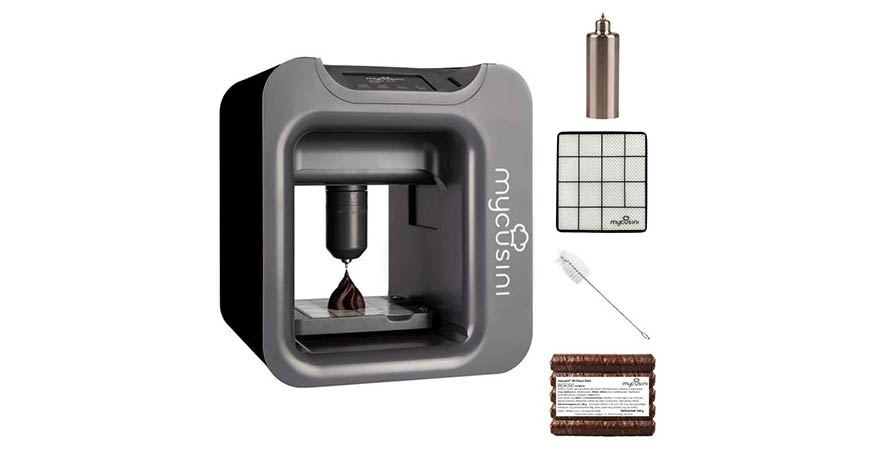How Is Technology Influencing The Food & Beverages Industry?
Imagine coming home from a long day of work, and your robot kitchen has already made dinner for you.
Food waste, sustainability and animal cruelty are some of the biggest challenges facing the food and beverage (F&B) industry nowadays. Like any other sector, the industry is dipping its toe into technology and innovations to seek solutions. While we are already seeing more food tech solutions in our everyday lives, like plant-based meat alternatives and food waste management startups, there are more to come! Here are three of the latest technologies that will be changing the way we prepare and consume food:
Automated kitchen
An automated kitchen where robots prepare, cook and plate food for you is a novel idea and has been booming in recent years. Although this technology is still in its infancy, many experts predict that robotic chefs will be a regular part of human life by 2025.
Moley Robotics is the first robotic kitchen builder in the world. The UK-based company showcased the Moley kitchen at Consumer Electronics Show 2021 and has developed robotic commercial kitchens for hotels. The Moley kitchen has a fully automated kitchen unit, including cabinets, robotic arms and hands, a recipe recording system and other kitchen appliances. It also comes with more than 5,000 recipes created by professional chefs worldwide; all you need to do is select a dish on the screen, and it will prepare the food for you! As per Moley’s website, the cost of a Moley kitchen can start from GBP99,099 (around US$222,132).
Besides cooking equipment, the Moley kitchen also pays great attention to hygiene. The company’s vision is to develop automated commercial kitchens that can maintain the highest possible hygiene level while cooking during COVID. The cooking process is fully automated, so humans do not have to touch anything. Furthermore, the automated kitchen has a UV-disinfection system to keep the workstation clean.
Given that food hygiene has always been a concern for the public, automated cooking has the potential to infiltrate more commercial kitchens. Apart from Moley Robotics, other companies, like Gammachef and Momentum Machines, have also debuted robotic kitchens that can provide automated cooking.
Engineered food

Besides new technology in the kitchen, the types of food served are also changing. Engineered food is food that has combined the DNA from other plants or animals. Over the past decade, a growing number of people have had the common goal of replacing animal products from exploitative factory farming with lab-grown, more humane alternatives.
Cellular agriculture is a growing research field that aims to produce agricultural products, like meat, milk and eggs, from cell cultures. One of the research institutes, New Harvest, is actively promoting cellular agriculture and has funded university researchers working on growing food in labs using organic protein and fat molecules instead of living cells.
For example, scientists can insert the DNA blueprints for casein (a protein in cow milk) into the yeast microbe to produce more casein for creating milk in a lab. Another example of engineered food is cultured meat, which is made from growing a small number of cells extracted from animals into meat tissues in Petri dishes.
These foods can also contain additional nutritional value, as scientists can insert desirable amounts and types of nutrition into these foods. For example, scientists can make cultured meat containing less saturated fats or eggs without cholesterol.
3D food printers

Besides engineered food, you might be able to try 3D-printed food very soon. The food printing market is expected to reach over US$8.49 billion by 2030, as per a report by InsightAce Analytic. With food 3D printers, users can decorate food layer-by-layer accurately with pre-installed recipes and pre-filled food capsules containing purées of different foods, such as vegetables, batters, dough, cheeses and jams. Although it is now mainly used in fine-dining restaurants or fancy bakeries to customize their dishes or print edible wedding cake decorations, some are going beyond that to make pizzas and create accessible meals for seniors and more!
One of the appeals of 3D food printers is the ability to personalize your meals by precisely adding the desired amount of nutrients and calories into the printed food. This will be useful for those with strict diet restrictions, such as diabetic patients. Besides, these printers can present food made with unconventional ingredients, such as insects—a protein-rich and more sustainable food source—in a more appealing way. Of course, machinery always comes in handy when we want to standardize the products and prevent errors. With a food 3D printer, you can rest assured that all the dishes it makes will look identical.
Currently, there are only a few professional-grade food 3D printers available, such as byFlow’s Focus, Foodini and MMuse, and one can cost around US$4,000. On the other hand, home user-friendly food 3D printers, such as Print2Tasts’s Mycusini and Procusini, can be priced from hundreds to thousands of dollars.
Automatic kitchen units, engineered food and food 3D printers are just a few innovations out there altering the F&B industry. Let’s hope that technology can continue to bring positive impacts to the industry and make our dining experience more memorable.
Also read:
Header image courtesy of Freepik








Gloss